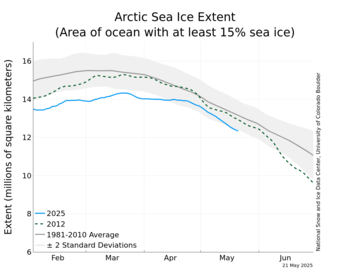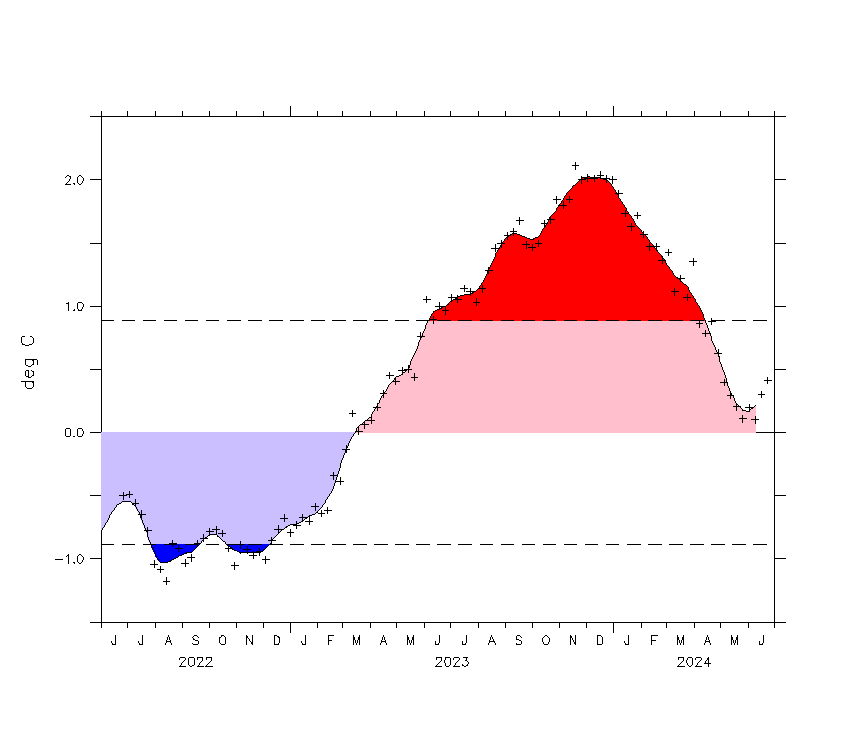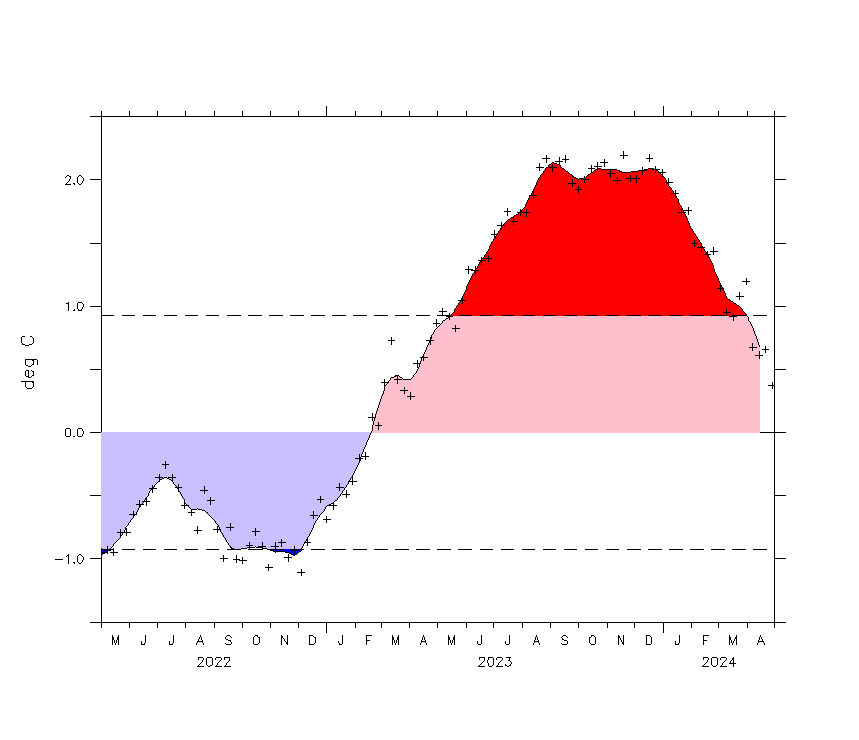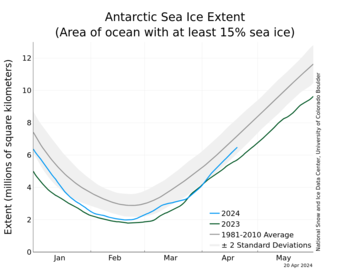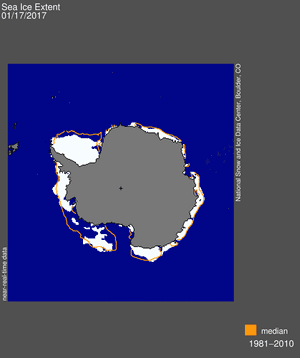ScienceRocks
Democrat all the way!
- Banned
- #1
It has finally developed! Might hold down the global temperatures some going into 2017.
EL NIÑO/SOUTHERN OSCILLATION (ENSO)
DIAGNOSTIC DISCUSSION
issued by
CLIMATE PREDICTION CENTER/NCEP/NWS
and the International Research Institute for Climate and Society
10 November 2016
ENSO Alert System Status: La Niña Advisory
Synopsis: La Niña conditions are present and slightly favored to persist (~55% chance) through winter 2016-17.
La Niña conditions were observed during October, with negative sea surface temperature (SST) anomalies in early November stretching across most of the eastern and central equatorial Pacific Ocean [Fig. 1]. With the exception of the Niño1+2 region, the Niño region indices remained negative over the last month, with the latest weekly value of the Niño-3.4 index at -0.8°C [Fig. 2]. The upper-ocean heat content also remained below average during October [Fig. 3], reflecting below-average temperatures at depth [Fig. 4]. Convection was suppressed over the central tropical Pacific and enhanced over Indonesia [Fig. 5]. The lower-level easterly winds were weakly enhanced near and west of the International Date Line, and anomalously westerly upper-level winds were mainly west of the International Date Line. Overall, the ocean and atmosphere system reflected weak La Niña conditions.
The multi-model averages favor La Niña conditions (3-month average Niño-3.4 index less than or equal to -0.5°C) continuing through the winter [Figs. 6] and [7]. Given the current atmospheric and oceanic conditions, along with model forecasts, the forecaster consensus favors the continuation of weak La Niña conditions through December-February (DJF) 2016-17. At this time, the consensus favors La Niña to be short-lived, with ENSO-neutral favored beyond DJF. La Niña conditions are present and slightly favored to persist (~55% chance) through winter 2016-17 (click CPC/IRI consensus forecast for the chance of each outcome for each 3-month period).
La Niña is likely to affect temperature and precipitation across the United States during the upcoming months (the 3-month seasonal outlook will be updated on Thursday November 17th). Seasonal outlooks generally favor above-average temperatures and below-median precipitation across the southern tier of the United States, and below-average temperatures and above-median precipitation in the northern tier of the United States.
http://www.cpc.noaa.gov/products/analys ... disc.shtml
EL NIÑO/SOUTHERN OSCILLATION (ENSO)
DIAGNOSTIC DISCUSSION
issued by
CLIMATE PREDICTION CENTER/NCEP/NWS
and the International Research Institute for Climate and Society
10 November 2016
ENSO Alert System Status: La Niña Advisory
Synopsis: La Niña conditions are present and slightly favored to persist (~55% chance) through winter 2016-17.
La Niña conditions were observed during October, with negative sea surface temperature (SST) anomalies in early November stretching across most of the eastern and central equatorial Pacific Ocean [Fig. 1]. With the exception of the Niño1+2 region, the Niño region indices remained negative over the last month, with the latest weekly value of the Niño-3.4 index at -0.8°C [Fig. 2]. The upper-ocean heat content also remained below average during October [Fig. 3], reflecting below-average temperatures at depth [Fig. 4]. Convection was suppressed over the central tropical Pacific and enhanced over Indonesia [Fig. 5]. The lower-level easterly winds were weakly enhanced near and west of the International Date Line, and anomalously westerly upper-level winds were mainly west of the International Date Line. Overall, the ocean and atmosphere system reflected weak La Niña conditions.
The multi-model averages favor La Niña conditions (3-month average Niño-3.4 index less than or equal to -0.5°C) continuing through the winter [Figs. 6] and [7]. Given the current atmospheric and oceanic conditions, along with model forecasts, the forecaster consensus favors the continuation of weak La Niña conditions through December-February (DJF) 2016-17. At this time, the consensus favors La Niña to be short-lived, with ENSO-neutral favored beyond DJF. La Niña conditions are present and slightly favored to persist (~55% chance) through winter 2016-17 (click CPC/IRI consensus forecast for the chance of each outcome for each 3-month period).
La Niña is likely to affect temperature and precipitation across the United States during the upcoming months (the 3-month seasonal outlook will be updated on Thursday November 17th). Seasonal outlooks generally favor above-average temperatures and below-median precipitation across the southern tier of the United States, and below-average temperatures and above-median precipitation in the northern tier of the United States.
http://www.cpc.noaa.gov/products/analys ... disc.shtml


